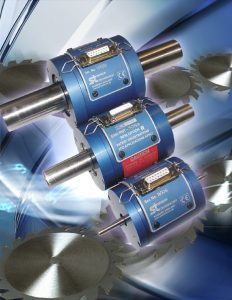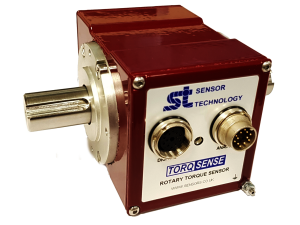Risk is being driven out of the use of heavy duty diamond cutting tools thanks to a Euro 800,000 EU-backed research programme at Greenwich University in London, to determine the true operating characteristics of such equipment.
At the heart of this vital work is a high tech torque sensor from Sensor Technology in Banbury, which proved to be the only effective way of measuring the true toque in the rotating saw blades and drill bits.
 Previous research has simply estimated the torque by calculation from the drive motors’ current requirements and consumption. This was known to be highly inaccurate, because every motor has its own unique signature of characteristics, which can have a significant effect on actual performance in highly demanding applications, such as drilling 1000mm bore holes through reinforced concrete, or sawing through the barnacle encrusted steel of sub-sea structures.
Previous research has simply estimated the torque by calculation from the drive motors’ current requirements and consumption. This was known to be highly inaccurate, because every motor has its own unique signature of characteristics, which can have a significant effect on actual performance in highly demanding applications, such as drilling 1000mm bore holes through reinforced concrete, or sawing through the barnacle encrusted steel of sub-sea structures.
In order to accurately profile the performance of each tool, it is necessary to measure the torque of the blade or cutting tip as it rotates; and for this a non-contact sensor is required. The Greenwich team considered several options around which to build their test rig, and the clear winner was the TorqSense unit from Sensor Technology.
This is a transducer that requires no physical contact between the sensor mounted on the high speed tool and its adjacent static pick-up, instead using Rayleigh Waves or surface acoustic waves (SAWs).
Such waves were originally identified by Lord Rayleigh as being the destructive force in front of earthquakes, but now Sensor Technology is able to harness their power to measure torque.
To do this they first create waves by passing an alternating voltage across the terminals of two interleaved comb-shaped arrays, laid onto one end of a piezoelectric substrate. A receiving array at the other end of the transducer converts the wave into an electric signal, the frequency of which is dependant upon the spacing of the teeth. Tension in the transducer reduces the operating frequency while compression increases it.
Thus to measure torque, two sensors are bonded to a shaft at 45° to the axis of rotation. When the shaft is subjected to torque, a signal is produced which is transmitted to a stationary pick up via a capacitive couple comprising two discs, one of which rotates with the shaft, the other being static.
For this project the sensor had to be mounted so that it could move linearly to accommodate the cutting progress of the tool. This proved quite difficult at first and lead to some inaccurate data, but careful tuning and damping of the electronic noise along with an accurate mechanism to allow the sensor to shadow the progression of the transducer was developed and the research could continue.
Until about 10 years ago, the existing research into heavy duty tools was adequate for the needs of the day. But in recent times more demanding operating standards will become legal requirements, while simultaneously the number of poorer quality tools imported from outside the European Union has risen sharply. (Often these masquerade under the livery of brands recognised for their quality, but are in fact made by unscrupulous ‘copycat’ manufacturers.)
In order to advance the state of the art it was necessary to build a database of the torque, power and other characteristics by the actual tools themselves under a great variety of operating conditions. This could then be used to profile the tools’ performance and thus allow accurate forecasting of their performance in the field. In order to log the performance data as accurately as possible it was fundamentally important to measure the true torque at the tools’ shaft rather than to estimate it from a more convenient measurement at the motor. The SAW techniques offered through TorqSense has proven to be the only effective way to do this, and in fact have proven to be remarkably simple and straightforward to implement.
“The level of danger to operators was becoming untenable as the number of ‘rip off’ tools grew,” says Dr Alec D Coutroubis, who is leading the Greenwich project and who has been awarded his doctorate for the fundamental research involved. “Also the European tool manufacturers were seeing their business severely undermined by the imports, which otherwise look absolutely identical to quality tools.”





